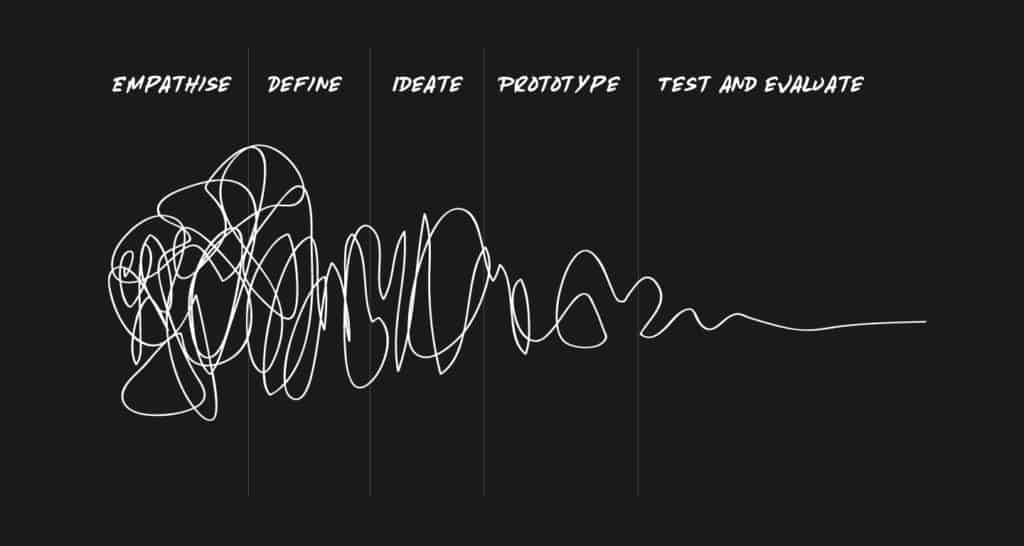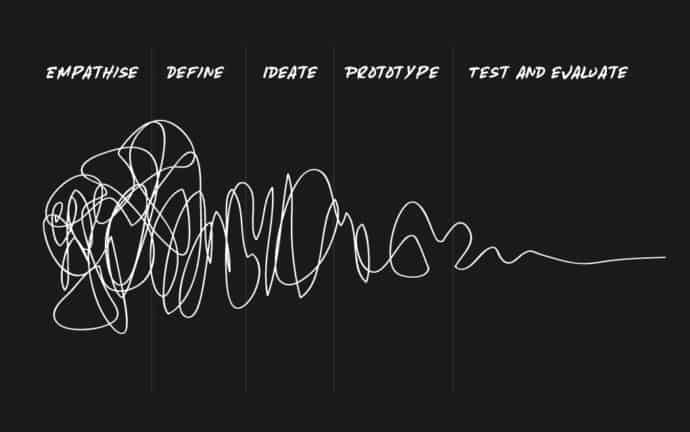In some ways, SEO copywriting remains the misunderstood member of the digital marketing family. While knowledge of backlink building and digital PR continues to grow, SEO-friendly copywriting is often taken for granted. For many businesses, the thought process is: We’ve got the keywords, and Julie in HR is good with words – we can just get her to whip up something that targets as many keywords as possible, right?
Wrong.
Like its aforementioned more popular cousins, SEO-friendly copywriting is a specialised task that requires a specialised skill set. Unlike other types of writing, writing for search engines isn’t just about conveying an idea – it’s also about using particular words, often in a particular order, to convey said idea and drive traffic.
The challenge for copywriters is weaving these keywords together in a way that feels natural and hits the sweet spot for both the reader and the search engine. The best SEO web content uses keyword mapping to strategically incorporate keywords into a piece of text without compromising readability. ‘Problem solving’ is one way to think of this process. Another way to think of it? ‘Design’.
As someone whose path to SEO copywriting included pit stops in architecture school and design journalism, I’m often struck by the similarities between design and SEO copywriting. From the ideation process to their iterative nature, the two fields sit on the same middle ground between creative process and technical skill. Over time, I’ve even found that applying design thinking to copywriting briefs has enriched my writing and guided my approach.
Before we explore the relationship between the two disciplines further, let’s take a closer look at what design thinking actually is.
What is design thinking?
In short, design thinking is exactly what it says on the tin: Thinking like a designer. In slightly longer form, it’s about tackling a brief the way a designer would – by setting out to solve a problem using a combination of logic and creativity.
The design thinking process is typically broken down into five stages:
- Empathise
- Define
- Ideate
- Prototype
- Test and evaluate
Coincidentally, each of these stages can be directly applied to a part of the SEO copywriting process. How? Design studios and digital marketing agencies are vastly different environments, but at the end of the day they both place creative processes at their core.
Thinking like a designer has helped me to establish clear checkpoints and organise my process in an agency environment, in addition to encouraging me to constantly challenge and improve my ideas. Interested in doing the same? Here are five ways to get started:
1. Empathise: It’s really not about you
With few exceptions, part of being any kind of professional writer is recognising that you’re not writing for yourself, but rather for your audience. In the case of SEO copywriting, this audience has two key segments: search engines and users. Writing for SEO is about addressing the needs of these two segments, not about developing your personal style or flexing your prose-writing skills.
Putting yourself in Google’s shoes, it’s not actually hard to empathise with their overall mission to respond to user queries with links to relevant, high quality content. This dovetails nicely with what users expect from good web content, which is relevance, quality, and usefulness.
It’s helpful to keep all of this top-of-mind when writing SEO copy. Keywords may have claimed second and third place on the list of 200 factors influencing Google rankings in 2019, but the importance of readability can’t be overstated. In a practical sense, readability means:
- Concise copy that is well-structured in short, easy-to-read paragraphs, with any lists tagged correctly using <ul> or <ol> tags
- Title tag optimisation, like including keywords in <Title>, <h1>, <h2>, and <h3> tags
- Relevant images that are captioned accordingly
- Consistent formatting including appropriate font size and choice, high contrast colours, and limited use of bold and italics
- Keyword mapping that incorporates relevant keywords without sounding overtly like “sales speak”
If you can tick off all these things in addition to meeting any idiosyncratic brief requirements from your client, you’re well on your way to good SEO copywriting.
2. Define: Communication is critical
As a brief-driven practice, copywriting for SEO requires constant communication between you and the client. This is important during the drafting and feedback stages, but can sometimes be neglected at other points in the project process. In fact, one study conducted by Up to the Light and the UK Design Business Association found that 77% of clients surveyed believed their agencies could provide more added value communication, including new ideas and feedback.
It may sound obvious, but before starting every project ask yourself, “What is the client actually asking me to do?” and prepare a return brief in the form of a deck or written document. If, after doing this, you feel confident that you understand the brief, then get started; if you can’t redefine the brief in your own words, it’s probably time for an email or phone call to the client to clear things up.
You may need a few rounds of clarifications for complex or experimental briefs, but don’t be disheartened. It’s often better to do something slowly but correctly than to jump in headfirst only to discover you’ve misunderstood the instructions.
3. Ideate: First thought (not always) best thought
Let’s zoom out for a minute and think of SEO copywriting as a crucial element within a broader content strategy. In today’s fast-moving digital marketing landscape, most copywriters do more than just produce copy. They also work on the strategy behind it, with even the most seasoned content strategists and copywriters sometimes struggling with creating quality content.
Here’s where knowing how to use design thinking skills can come in handy. With due respect to Ginsberg, your first thought is very rarely actually your best thought. This isn’t necessarily a bad thing (in many cases, bad ideas are actually precursors to good ones) – it just means that you need to come up with multiple options, and not just one.
In the design thinking process, the ideation stage is iterative and starts with a brainstorm in which you put all your ideas down on paper. The same goes for coming up with content strategies and figuring out ways to implement them – come up with a number of ideas, then revisit and refine them until you’re happy with the result.
4. Prototype: You’re going to fail at first
Similarly, once you get to the point of actually writing SEO copy, don’t just string together as many keywords as possible and call it a day. Think of your first complete draft as a prototype that requires a considerable amount of fine-tuning before it becomes the finished product. As a rule of thumb, you can take Yoast’s advice and expect an SEO copywriting process that is 40% preparation, 20% writing, and 40% correcting and refining.
Once you’ve written your copy, leave it to sit for a while before returning to evaluate it with fresh eyes and a red pen (or, more likely, ‘Track Changes’). Go through with a fine tooth comb followed by a microscopic fine tooth comb to check for:
- Correct keyword spelling and form
- Readability
- Flow
- Inclusion of all brief requirements including hyperlinks and CTAs
- Consistency with the brand’s tone of voice
More likely than not, your first draft will miss the mark on one or more of the above. Rework it to address any missing components, then check it against the list again, repeating the process until you have a draft you’re happy to share with the client.
5. Test & Evaluate: You need to sharpen your tools
Contrary to what Grand Designs would suggest, design is a specialised trade that requires years of training and practice to achieve competence. The same goes for SEO copywriting. Not having a degree in marketing or communications won’t prevent you from entering the field, but a lack of industry writing experience and technical skills may.
As an SEO copywriter, it’s important to continually develop your skills by practicing your trade with a diverse range of clients and actively seeking out new learning opportunities. Every piece of content written for SEO purposes will give you a set of hard metrics that you can look at and measure success against. These include: organic page views, average time spent on page, bounce rate, and exit rate.
Coupled with client feedback, these metrics can give you an idea of areas of your skill set that require further improvement. Are your organic page views low, in spite of clients loving your work? It may be worth revisiting your keyword research and revising your keyword mapping. Do you attract reasonably high organic page views and average time spent on page, but get lukewarm feedback from the client? Perhaps you should take a second look at their tone of voice guidelines to see if you’re missing something.
Top Tip
Treat every project as an opportunity to enhance your existing skills and develop new ones, and consider pursuing formal certifications from organisations like Google Analytics Academy or HubSpot.
Design thinking isn’t just for designers
The connection between thinking like a designer and better copywriting might not be immediately clear, but once identified it can be leveraged to great effect.
Applying design thinking to writing for SEO can help you understand your audience better and overcome stumbling blocks at the ideation and briefing stages. The result? Better, more well-rounded content that will be appreciated by both Google and visitors to your site.
At Yoghurt Digital, we’re constantly looking for ways to enhance our processes and skills. Our interdisciplinary team brings together lessons from a range of backgrounds and environments to deliver thoughtful, effective content marketing that integrates seamlessly into other services.
Looking to build your content marketing and SEO strategy with a team that’s not afraid to think outside the box? Get in touch today!

